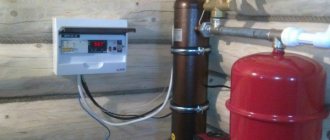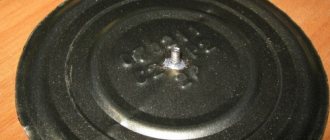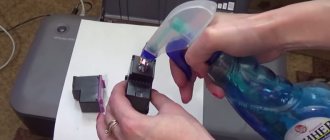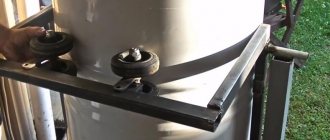The electric kettle has become an indispensable attribute of any kitchen and is a top seller in comparison with other household appliances. This device is widely used both at home, in the kitchen, and in the office. But unfortunately, like any electrical appliance, the kettle breaks down after some time of use. Since the price of this water heater is not too high, it is easier to buy a new one than to repair it. But if you consider yourself a DIYer, you can try to repair the electric kettle yourself.
Products without cord
This device has a base-stand on which the block and power connector are connected.
Connection to the electrical network is carried out thanks to a cord that is connected to this very stand. Due to this design, it is possible to pick up the kettle without removing the plug from the socket. There are modifications that are installed in a fixed position on the base. However, modern products can be placed facing any direction. The base also has a special compartment for storing excess cord. Cordless kettles contain:
- filter;
- steam outlet;
- indicator for determining the liquid level;
- power connector;
- base;
- bimetallic disk.
Electric kettle device
- Electric kettle stand. The design has 3 electrical contacts, two of which are located in the grooves (they are copper plates) and serve to supply voltage to the kettle, and one is located in the center and serves as a grounding conductor.
- Heating element (heating element). It can have either an open type (curved or spiral) or a closed type (like a metal disk). At the ends of the heating element there are leads for supplying voltage to them; small contacts are welded to them, onto which terminals are placed.
- Electric switch. Serves to protect and turn on an electrical appliance. There is a thermal relay installed inside that can protect the device during network overloads and overheating of electrical wires. There is a thermostat that turns off the device if the heating element overheats.
- Indicator. LED light located on the base of the kettle or on the power button. Indicates whether the electrical appliance is currently working or not.
- Frame. Mainly made of plastic, this option is available to everyone, as it is inexpensive compared to others; metal and glass (more expensive models). The stand consists of the same material as the electric kettle itself.
- Kettle flask. The cheapest and simplest models do not have it. In more expensive versions, the flask is located inside the kettle so that it does not touch its walls, which ensures that high temperatures are maintained for a long time. Consists mainly of metal or glass.
Other reasons why an electric kettle turns itself off
If the above is not related to the problem, and the kettle still turns off without boiling, then the problem may be due to the following breakdowns.
- A faulty switch where the contacts can burn due to poor connections. And he himself may turn out to be defective. To check this, the button must be disconnected and the wires connected directly. If everything works, then, without a doubt, the switch should be replaced with a new one. Often you don’t even need to disassemble the kettle to do this. A few cases when the button does not snap back are enough to replace it.
- Liquid leakage from the flask, which most often affects plastic and glass water containers. Accordingly, metal flasks are much more reliable (they are often used as a thermos). Even a few drops of leaking water can affect the operation of the device. At home, you can only change the rubber gasket on the bottom between the body of the kettle and the compartment with the heating element.
- Broken electrical wiring contacts. When disassembling, having reached the heating element, you should carefully inspect the contacts at the junction of the wires. Their violation contributes to loose attachment of the heater to the body. If the heating element is an open type at home, it is not difficult to solve the problem yourself by cleaning the contacts and high-quality insulation.
- Thermal fuse is broken. Many models have additional protection in the form of a thermal fuse. It is needed in case the device does not turn off for some reason after the thermostat is activated. Typically, contact opening occurs at temperatures above 100 degrees Celsius. But if the thermal fuse is faulty, then it can operate at lower settings, thereby preventing the water from boiling.
Operating principle of an electric kettle
First, let's look at how a kettle works in general and what goes where. And it works like this:
- First, the electrical plug is plugged into a 220V AC outlet.
- The mains voltage is supplied via a cable to the stand and XP 1 contacts; they are located quite deep so that a person cannot touch them.
- The electric kettle has a recess in its base; it contains contacts that close after the device is installed on the stand.
- After turning on the button on the kettle, the current will pass through the thermal switch St 1 and after the water boils it will automatically turn off.
- St 2 is a thermal protection switch, it is always in operation, but is only activated when the empty kettle is switched on by mistake.
- Well, the last stage is the supply of voltage to the heating element, abbreviated as heating element.
- HL is a light bulb that signals a person whether the electric kettle is on or not.
The kettle heats but does not boil water
If the kettle turns off before the water boils, there may be one of the reasons for this:
- Presence of scale on the heating element. It overheats excessively due to plaque and the fuse trips earlier;
- Faulty thermostat. The unit must be disassembled, ringed, and replaced if necessary.
What kind of damage can the kettle be returned to the seller?
If the purchased product does not meet the declared quality or malfunctions in its mechanisms are identified during operation, according to the Law on the Protection of Consumer Rights, the product can be returned to the seller and get a refund. To do this, certain conditions must be met.
- — the kettle has not been used, its appearance, factory seals and labels, as well as its presentation remained completely intact
- - availability of a sales receipt or other document evidencing the purchase (in the absence of such documents, it is possible to refer to the testimony of witnesses)
- — on the day of contact there is no similar replacement product available for sale
- — satisfaction of the request for the return of money must occur no later than 10 days from the date of presentation
- — you must have a civil passport with you to draw up a certificate of return of the kettle.
If the purchased kettle is under warranty, its repair can only be carried out in warranty workshops, the list of which is given in the warranty card. Independent disassembly of the device and an attempt to eliminate the malfunction entails termination of the manufacturer’s warranty obligations.
A simple conclusion follows from this. It makes more sense to use the warranty than to try to fix the kettle yourself. There is no point in hoping that the workshop will “not notice” any traces of an autopsy. For a professional who repairs household appliances every day and for many years, one glance is enough to determine whether the kettle has been disassembled or not. In addition, there are various tricks on the part of the manufacturer that are aimed at avoiding such situations. They are not visible to the eye, but are clear enough to be used to determine (and prove) the fact of unauthorized disassembly.
All defective goods are subject to return or exchange, at the request of the buyer. The only exceptions may be complex technical goods that are subject to examination for manufacturing or warehouse defects. The teapot, of course, does not fall into this category.
If controversial issues arise, the seller is obliged to conduct an expert examination of the goods at his own expense. The buyer has the right to be present during the examination. If, as a result of the examination, it is proven that the teapot (or other product) is defective due to the fault of the buyer, then he will be obliged to reimburse all expenses for the examination.
The principle of operation of electric kettles, device and electrical circuit
An electric kettle is a household appliance with a fairly simple design in terms of its type of device and operation. Today on the market you can find many different models of electric kettles, but it should be noted that they all function and do their job according to the same principle. As a rule, for different models of electric kettles, depending on the presence of various additional functions, the circuits may differ slightly from each other.
An electric kettle consists of several different parts. The structure of such devices, as a rule, consists of:
- A special housing that acts as a reservoir for heated water. It is worth noting that in some models the liquid reservoir is not the body, but a special removable flask.
- Heating element. In electric kettles, such elements can be open or, on the contrary, closed. In addition, the heating elements used in teapots can be disk or spiral.
- A special stand, which is equipped with a connector that allows you to connect the kettle to the mains power supply.
- A thermostat that turns off the power to the device when the water boils (located directly under the device’s power button).
- A special block, which is a connector for powering the device (located on the bottom of the device in the side or central part).
Models of electric kettles that are equipped with a special thermostat have more contact groups. This feature must be taken into account when carrying out their own repairs. Thermostats allow you to heat water in different modes while using the electric kettle, as well as keep it hot for a long time.
The operating principle of electric kettles that operate from the electrical network is quite simple. When such a device is connected to the electrical network and the power button is pressed, the heating element begins to heat up. Thanks to this, the water in the kettle’s reservoir boils or is heated to the temperature set by the user (in models with an installed thermostat).
When water is heated, when it boils, a large amount of steam begins to form in the body of the kettle, which, through a special channel equipped with a steam-permeable hole, begins to be supplied to a special bimetallic thermostat plate. Thanks to the action of steam, the metal begins to gradually expand and act on the lever, thereby opening the contact groups and turning off the equipment.
Why the electric kettle does not turn off when boiling: causes of breakdown and do-it-yourself repair
Household appliances have become a part of our lives and have greatly simplified them. There are both pros and cons to this at the same time. On the one hand, household transactions have become much more convenient. On the other hand, if the refrigerator, washing machine or stove breaks down, most will not know what to do.
Problems can arise with any household appliance. The teapot is no exception. Cases are different. But one of the most common is that the kettle does not turn off when it boils. Let's figure out why.
Electric kettle
Kettle design
To deal with the breakdown, you need to understand the principle of operation of the equipment.
The design of the kettle is extremely simple. After pressing the power button, electricity is supplied to the heating elements. They are called heating elements, or tubular heating elements. The heating element is located either in a special stand or in the bottom of the device itself - it depends on the model.
The water gradually warms up. After crossing the threshold, hot steam begins to form. Since the lid is closed, the steam needs to escape somewhere. For this purpose, a channel is adapted that leads to the shutdown button. In front of the switch there is a bimetallic plate that acts on it. This mechanism disconnects the equipment from the network.
Device operation diagram
Causes of failure
Now that the principle of operation is known, it is much easier to understand why the electric kettle stopped working and does not turn off on its own when it boils. There may be several reasons:
- The most common reason is that the lid is not closed, or is not closed tightly. Instead of steam moving through the channel, it will escape through the cracks to the outside. Because of this, the shutdown mechanism will not work.
- There is no filter or it is installed unevenly. Because of this, the lid does not fit very tightly to the edges. Gaps are formed through which steam escapes.
- If you don't take care of your kettle, scale will form over time. This will be immediately noticeable by the plaque inside.
- The steam outlet channel is clogged. This can happen in older models. In newer ones, the creators took this shortcoming into account.
- Breakage of the switch. Changes are mandatory without exception.
- Damage to the plate, which cuts off electricity when heated. Of course, in this case you can turn off the kettle manually. But it is still advisable to repair it to avoid fire or smoke.
- Contacts sticking. Simply wipe and clean the contacts with sandpaper to solve the problem.
Some of the reasons can be solved by prevention and proper care of the kettle. Descale, close the lid tightly, turn off the kettle during power surges and do not heat it many times in a row. For other faults, DIY repairs are possible. You just need to know what exactly to do.
How to fix a kettle yourself that won't turn off when it boils
First of all, the device must be inspected for visible damage. Are there any cracks or chips from which steam can escape? Is the lid tightly closed?
Open lid
If everything is in order on the outside, then you should look inside. Perhaps the filter is not inserted too tightly and is sticking out. Because of this, the lid does not close - this is one of the most common reasons.
Next you need to check if there is any scale underneath. If there is one, it makes sense to thoroughly rinse and clean the insides.
If you have examined all the visible parts, but there are no problems with them, then it’s time to disassemble the kettle and get to the switch and bimetallic plate
To do this, carefully unscrew all the retaining screws.
It is advisable to record the dismantling process on camera. This will make it easier to assemble the parts into place later.
- If the switch fails, it must be replaced. It is no longer possible to repair it yourself.
- If the contacts are stuck to each other or burnt, you will need sandpaper. It is necessary to carefully wipe each contact for several minutes. Then remove the scratches with thick felt and you're done!
Disassembled device
After fixing the problem, you need to reassemble the kettle. But it’s too early to include it online. Even if you assemble it according to the instructions, you can make a mistake.
Disassembly nuances taking into account the model
Before starting repair work, it is necessary to conduct a preliminary inspection of the kettle for operability and eliminate all sorts of trivial issues that could cause a malfunction (connection to the power supply, activation of the power button, correct position, installation of the device directly on the stand itself). If, after a preliminary check, the device still remains faulty, then it is necessary to dismantle all components and find the cause of the breakdown. How to disassemble an electric kettle? It is recommended to disassemble models of electric kettles that are equipped with a closed heating element as follows:
- Remove the cover located on the bottom of the device. In this case, you need to take into account the fact that on older models, the fastening elements are located in the upper part.
- In more modern models, during disassembly, it is necessary to remove the top cover, which is secured in two grooves located at the base of the handle.
- The grooves should be carefully released, and then the bolts located under them should be unscrewed. In some models, the top handle is removed directly along with the lid.
- Then you need to turn the kettle over and remove the fastening elements at its bottom.
- Using a screwdriver, unclip the special fixing elements that are located around the perimeter of the bottom of the kettle.
After dismantling the bottom for damage, using a tester, you should inspect the heating element of the kettle. In models equipped with a disk heating element, the heating element does not come into contact with water. Therefore, at this stage, if the heating element is in a faulty state, you can determine the breakdown by ringing it with a tester. As a rule, the heating element in a kettle fails due to the appearance of broken spirals in the tube.
To check the thermostat for any malfunctions, you need to remove the screw located at the bottom of the kettle handle. Then the handle must be carefully removed and the screw removed under the power button. The connection points to which the thermostat is connected must be checked with a multimeter. After ringing, if the malfunction was not detected, you need to remove the assembly itself. To do this, first dismantle the cover itself, and then remove the part. To remove the cover, you need to lightly press it with your fingers and push it forward.
To properly disassemble the old model of electric kettle, you need to unscrew the screws located on the bottom of the device and dismantle its side part to gain access to the heating element, as well as the thermostat. In the case where the power button is located at the top of the kettle, the device must be completely disassembled. To check the open heating element, you must first dismantle the cover.
If the heating element is in working condition, and it was not possible to identify its malfunction, then the stand should be inspected. To do this, you need to disconnect it from the power supply, turn it over and remove all the bolts. Then you need to dismantle the lower part of the stand and inspect its elements.
Presence of leaks
This is another problem that many people face. The kettle is used frequently, so water leaks are inevitable. But how to understand this problem? First it is important to understand why this happens:
- One of the common reasons is a violation of the sealing of the plastic case. Another reason is the failure of the water indicator. You need to give it a visual assessment. Often small cracks are simply visible. It is from them that water begins to ooze.
- Another reason is when the heating element loses its original rigidity. If an electric kettle leaks, how to fix it? Everyone can solve this problem themselves by simply tightening the existing fasteners.
- Sometimes leaks occur due to wear of the seal. How to fix an electric kettle if it is leaking? In this situation, even tightening all the fasteners will not help remove the damage. In this case, you cannot heat the water, otherwise a short circuit may occur. The leaks will stop when the seal is replaced. This is the only solution that is relevant in the fight against this breakdown.
- The worst damage is the formation of holes in the bottom of the kettle. Not everyone is ready to understand that their kettle is seriously out of order. This happens for various reasons, but they all boil down to one thing - careless handling of the device. In such a situation, you definitely won’t be able to solve the problem yourself. There is no point in taking the device to a service center, since few technicians will restore such a device. Of course, if the kettle is expensive, then you can spend money on repairing it. But this is the case when it is better to buy a new one.
There are many reasons why an electrical appliance fails. Before you panic, you should eliminate basic operating errors.
Electric kettle stand repair
The reason for a non-working electric kettle may also be hidden in the stand. There's nothing special to break there. There is only a contact group and leads from it, to which the electrical cord is connected. All this can break here - the wire falls off or the contact point oxidizes.
There is nothing particularly broken in the stand of an electric kettle
In most kettles, the wires from the cord are not soldered. Contact is achieved using copper contact connectors, which are placed on the terminals of the contact group. We carefully examine it and give it a good tug. If there is an oxide film (it is dark) or burnt areas, remove everything and clean it to clean and smooth metal.
If the contacts are clean but “moving”, remove it, press it with pliers and insert it into place. If the kettle is no longer under warranty, you can solder the contacts for reliability.
Although outwardly similar, cylindrical contacts may be different. Available with movable contacts between plastic protrusions
And also, it is worth taking a close look at the contact group. Despite the fact that they are similar, their structure may be different. There are those like in the right photo - with movable contacts that are located between cylindrical plastic protrusions. When pressed (with a toothpick, the end of a screwdriver, etc.), the contacts should move smoothly down. After the force is removed, they should return to their original position. Perhaps an oxide film or other contaminants are preventing the contact from moving, which is why the kettle does not work.
The second type of contact is with a pin in the center. There are usually fewer problems with it, but we look here too. You never know what could happen.
We remove even minor traces of dirt
In any case, we check for the presence of a dark film. This is an oxide deposit that acts as a dielectric, worsening contact. We remove dirt and plaque during repairs.
How to repair an electric kettle yourself
It is possible to repair an electric kettle with your own hands in case of almost any breakdown, except for damage that is critical and irreversible, for example, when the vessel itself is destroyed or cracked. Most items can be restored or replaced. You definitely shouldn’t throw away an electric kettle if it stops turning on or off or heating up - the reason is often easily eliminated. In addition, parts of broken products can be useful as spare parts. There are three groups of breakdowns: those relating to electrical parts (contact group, switches), heating element and housing, and plastic parts.
Operating principle and electrical diagram
Before you begin diagnosing or repairing a household kettle, you will need to find out what components it consists of and how it works. Despite the abundance of offers under different brands, all electrical devices in this category have a similar design. They include the following parts:
- frame;
- power indicator;
- a heating element;
- control system (power button, thermostat);
- stand with power cord and contact group.
Connections in the internal communication circuit are made using plug-in terminals, or, less commonly, soldering. After placing the kettle filled with water on the stand and pressing the key, the supply circuits of the device are closed. This is accompanied by a light indication indicating that everything is working. If at this stage there is no contact between the stand and the bottom of the device, the switch is faulty, nothing will work.
Next, a heating element (spiral or disk) installed at the bottom gradually brings the water in the tank to a boil. After boiling, the automatic switches off the power to the heater (the light goes out with a characteristic click). If there is not enough water in the kettle or it is accidentally turned on empty, the protection system should also work, de-energizing the power circuits.
Arrangement of electric kettle components
Both the old models with spiral heating elements and the new ones with disk-shaped heating elements remain similar in principle of operation and the presence of main components. They will definitely contain a heating element, a power button and a protection unit. Without them, the kettle will not work.
Overheat protection system
This unit is necessary to meet fire safety requirements. If it were not there, then if the water level was insufficient and an empty kettle was turned on, a fire would certainly have occurred. And so a special contact group will de-energize the heating element.
As a working tool, it uses a special plate made of 2 metals that reacts to heat. The normal position is closed; when overheated, the bimetal is deformed, breaking the power circuit, turning off the heating element. Manufacturers of household appliances use a number of standard solutions for this unit. And all use bimetallic sensors, which are reliable and efficient.
The only drawback of thermal protection is the need to wait until the working part cools down and returns to its original position. After this, the kettle is ready for use again.
Automatic shutdown system when water boils
Another critical unit, without which normal operation of the kettle is impossible. A procedure that we are so accustomed to that we don’t pay attention is the automatic switching off of the device after heating the water. It is no coincidence that manufacturers in their operating instructions focus on pouring liquid into the flask to a clearly marked level (corresponding to the nominal capacity). The operation of the circuit breaker under the influence of a jet of steam depends on this.
Power indicator and backlight
Each model has a power indicator light: without it it is difficult to determine the status of the device. This is a light bulb interlocked with the contacts of the “main” button. Backlighting is an optional feature. Some manufacturers include it as an additional option. It works synchronously with turning on (off) the kettle.
Diagnosis of electrical device problems
In order to diagnose the electric circuit of the kettle, you need to use a multimeter (or tester).
The inspection, as a rule, starts from the point where the power cable is connected to the outlet and ends at the thermostat. In order to consistently take measurements on all sections of the chain, it is necessary to disassemble the kettle body.
But first you need to make sure that the power cord and the outlet it connects to are in good working order. And also check the presence of voltage on the stand under the kettle, through which the current is transmitted to the heating element.
If no open circuit is detected, unscrew the three screws at the bottom of the kettle and remove the protective cover. Often, in addition to screws, the cover is additionally secured with plastic latches, like on a mobile phone. Therefore, it is advisable to have a thin and flat screwdriver in order to release the plastic locks. Sometimes the screws are closed on top with decorative plugs, which need to be carefully removed with a thin screwdriver.
Removing the Bottom Cover
Disassembling the handle
If the screws cannot be removed from the plastic case, the most effective way to solve this problem is to touch them with a heated soldering iron. The plastic will soften slightly and release the clamped screw.
After removing the cover, a visual inspection of the disk heater is carried out, as well as the contacts supplying electric current to it. The surface of the contacts should not be melted or covered with metal scale. A properly functioning contact looks uniform, without purple spots, which indicate overheating.
If there are no obvious signs of damage to the circuit, the contact group and the heating device are tested with a multimeter. The resistance of a working heating element is approximately 30–40 Ohms. Readings taken from a damaged heater (no resistance, the tester shows an “infinity” symbol) will indicate an open circuit. In this case, it needs to be replaced.
Checking the heater operation
It is also worth checking the operation of the resistance associated with the LEDs. Their operating range is 13–15 ohms. If the ohmmeter gives different readings, the resistor should be replaced.
To further test the kettle's power supply circuit, you need to dismantle the handle in which the temperature sensor (or temperature sensors), the manual switch button and the automatic shut-off unit are located.
The handle cover is secured either with screws or plastic snap-locks. Vapors from boiling water constantly circulate inside the handle, and this creates favorable conditions for metal corrosion.
After a thorough inspection, all elements are additionally tested with a multimeter. The terminals are cleaned with sandpaper or a file. The broken wires are restored.
Damaged parts are usually simply replaced. There is a wide range of spare parts for electric kettles on sale, their prices are completely affordable. The main thing is to ensure that they exactly match the model of the device being repaired.
Troubleshooting
The need for ringing arises when any component of the electrical circuit breaks down (the device does not turn on, the reasons are unknown, and trivial errors such as a non-working socket or loose installation have been eliminated). The work is carried out using a special device - a multimeter, as well as screwdrivers selected according to the type of screws, and a sharp knife with pliers or pliers. In this case, the following points are sequentially checked:
- The performance of the flexible cord and stand contacts. It is difficult to repair a burnt stand without the appropriate experience, and its breakdowns are visible to the naked eye, but to save time, the contact group is always checked. At this stage, one end of the tester is applied to the plug, the other to the springy contacts (most often they are located in the center). Detected faults, such as a burnt or insufficiently thick cord, carbon deposits on the surface of the brass contact, are eliminated if possible, after which the group is called again. If there are no problems on all three lines (2 current-carrying lines and ground), repairing electric kettles becomes more complicated; the body has to be disassembled.
- The performance of the heating element power supply terminals at the base of the housing. At this stage, you need to disassemble the kettle, as indicated in the instructions, and check the contacts of the outer and inner copper rings in turn. If there is no ringing, the power supply block is completely disassembled to remove carbon deposits, reassembled and checked again.
- Power button functionality. One probe of the tester touches the contact of the wire that supplies current to the button, the second touches the power wire of the heating element. The button is checked in the off and working state; if there is no sound signal about serviceability, in the second case it needs to be repaired or replaced (if necessary, power the kettle directly).
- The performance of the heating element. One probe is directed to the power contact, the second to the connection point with the wire from the power button. If the circuit breaks, you need to replace the heating element with a new one, which is not always possible.
In addition to checking the circuit with a multimeter, the actual resistance of the heating element is assessed. To perform this operation, it is enough to remove the bottom of the kettle, turn on the tester in measurement mode and point its probes at the output terminals. If there is a significant deviation from the value calculated or declared by the manufacturer, the heating element needs to be cleaned or replaced.
Check the functionality of the flexible cord and stand contacts
Check the contacts of the outer and inner copper ring
See if the power button works Diagnose the operation of the heating element
Required Tools
Before repairing an electric kettle, it is necessary to correctly determine the possible cause of breakdowns and malfunctions, as well as prepare all the tools necessary to carry out the work. To carry out troubleshooting repairs you will need:
- multimeter (used for testing and troubleshooting directly in the electrical circuit);
- knife, electrical tape;
- pliers;
- set of triangular screwdrivers.
It is worth considering the fact that models from different manufacturers may use different screws. Therefore, depending on the type of screws, before you repair the kettle, you will need to purchase and then use a flat or Phillips screwdriver.
Repair of power indicator and backlight
For ease of use, the kettles are equipped with a power indicator. It can be made on the basis of a neon light bulb or LED. It can also be equipped with backlighting. In this case, the indicator can be combined with the backlight.
Electric kettle with light Polaris PWK 1767CGL
The indicator allows you to determine whether the kettle is properly installed on the stand or whether it is plugged into the outlet. It also performs some diagnostics. After all, if the light is on, but the water is not heated, this indicates a poor contact or a malfunction of the heater.
Electric kettle power indicator
The power indicator may be a neon light bulb or an LED connected to the terminals of the heating element. The light bulb is usually connected through a current-limiting resistor of about 200 kOhm. Malfunctions are extremely rare and usually breakage of conductors. The light bulb is checked by replacement, and the resistor is checked by a tester.
When using an LED, a rectifier (diode) and a current-limiting resistor are used. All together they form the so-called driver. The parts are checked by a tester.
LED lights
LEDs are chosen for illumination, as they have a high brightness. Neon is not suitable in this case. As in the case of indication, power is provided by the driver. The diagram is simple and is given below:
Simple LED Driver
Failures are rare and the weak link here is the LED.
Operating rules
Having purchased an electric kettle, you must read the instructions before using it for the first time. In order for the device to work for a long time and efficiently, you need to follow simple operating rules:
- do not turn on the device with little or no water;
- use of an individual socket for an electrical appliance;
- do not cover the kettle with other objects and do not place anything on top;
- do not turn on the device if there is visible damage to the plug, socket or power cord;
- regular maintenance of household appliances.
Features of work
Most models of electric kettles today turn off on their own after the water boils. There are modifications with manual shutdown. Before first use, it is recommended to fill the product with water and bring it to a boil. It is also necessary to wash the kettle at least 2 times before use. If the products have not been used for a long time, you should do the same steps. Modern devices are made of heat-resistant plastic or stainless steel.
Before cleaning electrically powered devices, you must unplug them. If they are cold, wash the outer surface with a damp cloth. The use of abrasive substances is prohibited. Water is heated thanks to the presence of a special element inside the kettle. It is attached to the body. Fixation is achieved using:
- threaded bushing;
- metal nuts;
- screws holding the housing to a watertight seal.
Often such seals cause leaks. In the latest models on the market, the disc element is closed and located at the bottom of the water compartment. This is done to make cleaning surfaces simpler and easier. This measure also ensures better descaling. In various models, seals are made in the form of:
- gaskets;
- washers;
- bushings
A safety device is provided in almost all models. It is responsible for turning off the device after the water boils. This element is triggered if someone turns it on without first pouring water. In addition, modern products are designed in such a way that the user can visually control the amount of liquid poured.
To connect to the power supply network, there is a cord or wire, the feature of which is flexibility. At one end there is a plug, and at the other there is a power connector block. It has sockets that provide contact. A coiled power cord is provided to save desk space. It is also good for families with small children, as it is less accessible to them.
Electric kettle repair
If your electric kettle breaks down, don’t rush to buy a new one, because you can try to repair your favorite kettle. Most often, simple breakdowns occur in electric kettles, which any master can easily fix.
There are foreign particles in the water
Filter damage. Modern electric kettles are equipped with mesh filters that prevent scale particles from entering the heated water. At least occasionally clean a clogged filter using a brush under running water.
The electric kettle heats up slowly.
A thick layer of scale on the heating element. In addition, a tubular electric heater clogged with scale will soon burn out. Scale deposits are destroyed with an anti-scale agent or regular vinegar. You can also dissolve scale in a kettle by boiling water with two bags of citric acid.
The electric kettle does not turn off.
- The kettle lid is not closed properly. Steam escapes through a loosely closed lid, bypassing the channel with a thermal relay in the form of a bimetallic plate.
- The steam passage is closed. In older models of kettles, this hole for the passage of steam to the thermostat is small and becomes clogged with scale particles over time.
- The switch is faulty. The reason for this may be either a broken bimetallic plate or a jammed switch pusher. Remove the switch, and if its body is melted, that is, its asymmetry is noticeable, or charring of the plastic near the metal contacts, then it must be replaced.
The electric kettle does not heat the water to a boil.
- The bimetallic strip has become loose. Over time, the metal of the plate loses its elasticity and cannot keep the switch in the on position until the water boils.
- The thermal protection of the contacts in the stand is triggered. Perhaps the scale-covered heating element overheats, so an increased current flows to it.
Water is leaking from the electric kettle.
- The water level indicator is broken. Most likely, the indicator has cracks caused by impacts.
- The kettle body is damaged. The plastic body breaks when the kettle is dropped, the metal body begins to leak as a result of corrosion. In this case, you need to buy a new electric kettle.
- The heating element is loose. Using little force, tighten the nut or screws securing the tubular electric heater.
- The sealing gasket is damaged. If, after tightening the heating element mounting, the water leak has not been eliminated, then you need to replace the rubber gasket between the heating element and the kettle body.
The electric kettle doesn't heat up at all.
- The power plug is faulty. Also be sure to check the power outlet.
- The fuse has blown. This protective device is located inside the case, and usually burns out due to other serious malfunctions in the kettle.
- The kettle switch does not lock in the on position. The switch is probably completely worn out and needs to be replaced.
- The heating element has burned out. The serviceability of a tubular electric heater is easy to check; it is enough to measure the resistance at its ends disconnected from the electric kettle circuit. The absence of resistance readings within 20 - 30 Ohms indicates a malfunction of the kettle's electric heater.
- The contacts in the stand are faulty. After disassembling the kettle stand, inspect the contact connections. The presence of soot on the elements, melting of plastic parts, clearly indicates that the group of contacts in the kettle stand is broken.
- The thermal protection of the contacts in the stand has tripped. This happens if you have previously turned on the kettle with a small amount of water, or without it at all. Wait a few minutes for the thermal protection plates to return to the on state.
In order for the electric kettle to work for a long time, it must be turned on only with water, and at least occasionally the internal surfaces of the kettle must be cleaned of scale.











